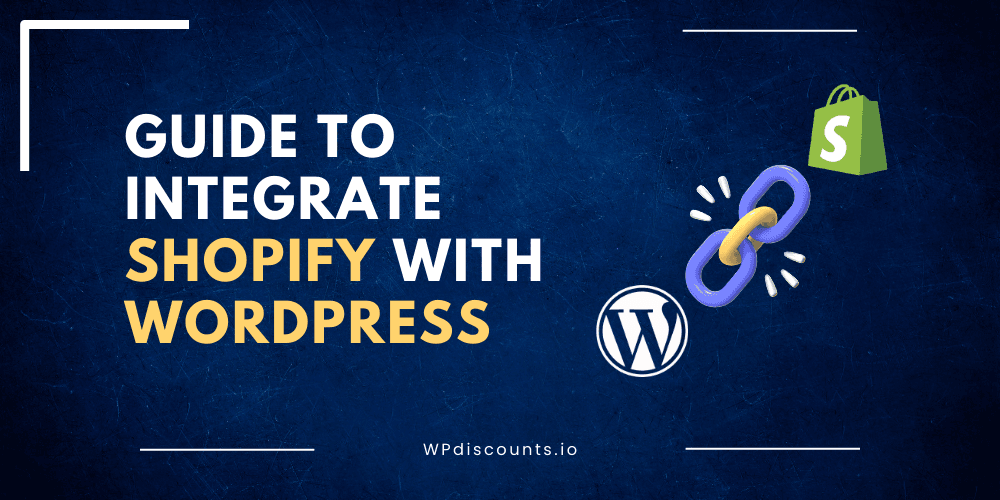With Shopify, conducting e-commerce business was revamped to be more efficient. But it was only possible on its platform. Back then, when you needed to integrate Shopify with WordPress website, it was tough and technically problematic, particularly in WooCommerce.
Products didn’t appear on WooCommerce shop pages, and there was a conflict between WooCommerce and other plugins, but critically, you would have wasted a lot of effort just to get it set up because it was so complex.
While stuck in those issues, your business would have experienced significant revenue losses, customer dissatisfaction, and increased operational costs.
This is because there was no plugin to bridge the gap and smoothly integrate Shopify with WordPress websites.
Thanks to ShopWP, we don’t have such problems anymore.
So what is it? How does it help? What are its features, and how much does it cost? Let’s find out.
What is ShopWP?
ShopWP integrates Shopify with WordPress, provides custom page builder options to make the store according to user’s needs, and syncs all products. With it, you don’t have to manually edit items or settings on WordPress, it automatically updates on both sides whenever you make changes.
Features of ShopWP
There are multiple features of ShopWP, but some of the important and popular ones are below:
Syncing Shopify data
It syncs all your Shopify data into WordPress. Here’s a detailed breakup of this feature:
One-Time Sync
You can sync your Shopify data only once to get more control when the data is pushed to WordPress.
Automatic Syncing
It repeatedly syncs all data at specified intervals so you don’t have to worry about keeping it updated manually.
Remove All Synced Data
It removes all synced data including:
- Data in custom tables
- Detail pages of product and collection.
- Custom fields
Remove All Synced Images
It deletes all synced images that are only related to ShopWP. It will not delete anything else from the media library.
Clear Cache
ShopWP stores data in its cache for improved performance. If you see product description displays incorrectly or the plugin doesn’t perform well, try clearing the cache.
Subscriptions
You can sell subscription products with this app. With ShopWP version 8.0, this feature is now built-in for free.
Single Buy Button
It displays one or multiple product buy buttons in the form of a list or grid. It will show three elements such as :
- Variant selections
- The quantity selector
- Add-to-cart button
Product detail pages
Technically, they are not “pages”, but rather templates to customize. This feature comes with two default pages:
- Product Detail Page (PDP)
- Product Listing Page (PLP)
Short Codes
It displays products in a list or grid which is perfect for filtering and sorting products.
Gutenberg Blocks
This packs 13 Gutenberg Blocks to show products and collections.
Built-in Cart Features
This opens up more options some of which are as follows:
Storefront
This filters and sorts products, and offers a pagination feature to find products according to users’ preferences.
Search
This feature helps users to explore the entire Shopify catalog with a dynamic search.
Cart Icon
This embeds a cart icon anywhere and automatically toggles the slide-in cart option upon clicking.
Image Zoom
This allows users to view product images more closely when they hover over the image.
Next image on hover
It displays the second image of the product.
Carousel
It displays products in an easy-to-navigate carousel and allows users to customize its speed, and slide count.
Direct Checkout
It allows you to skip the ShopWP cart with the Direct Checkout feature.
Pricing Plan
There is only yearly plan ShopWP offers.
| Yearly Plan | |
| Standard | Agency |
| $199/year | $499/year |
| What’s included? | All Standard features, plus: |
| Access to all ShopWP Pro features | Install on unlimited WordPress sites |
| Access to our private Slack Channel | Access to all plugin extensions |
| Download updates to staging sites | Priority support |
| World-class product support | |
How to setup
Enter your Shopify store URL.
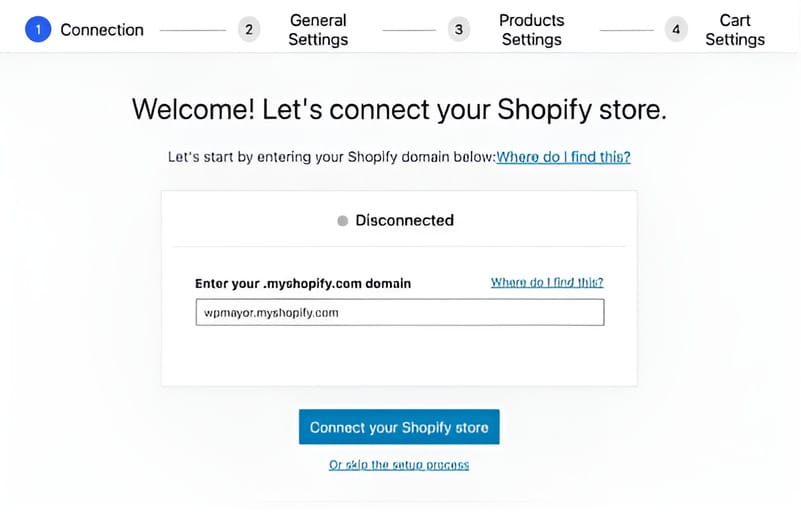
Now, install the ShopWP app on the Shopify store. You’ll be notified that you’ve successfully connected your store:
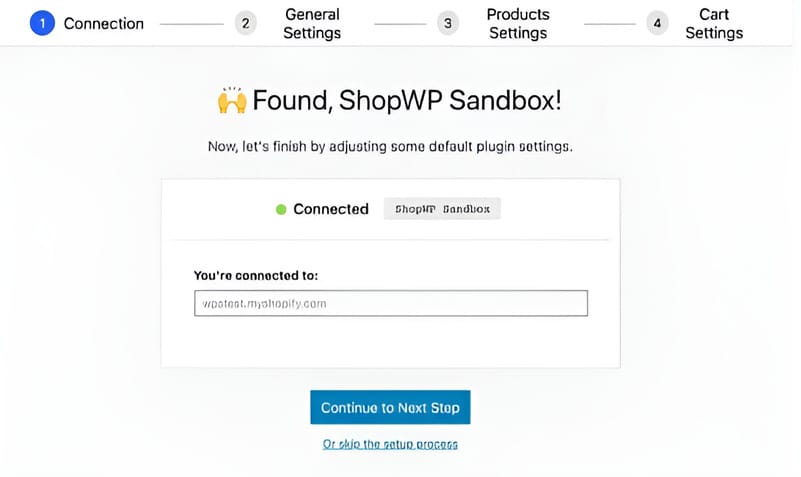
Now, choose where to create your store listing pages.
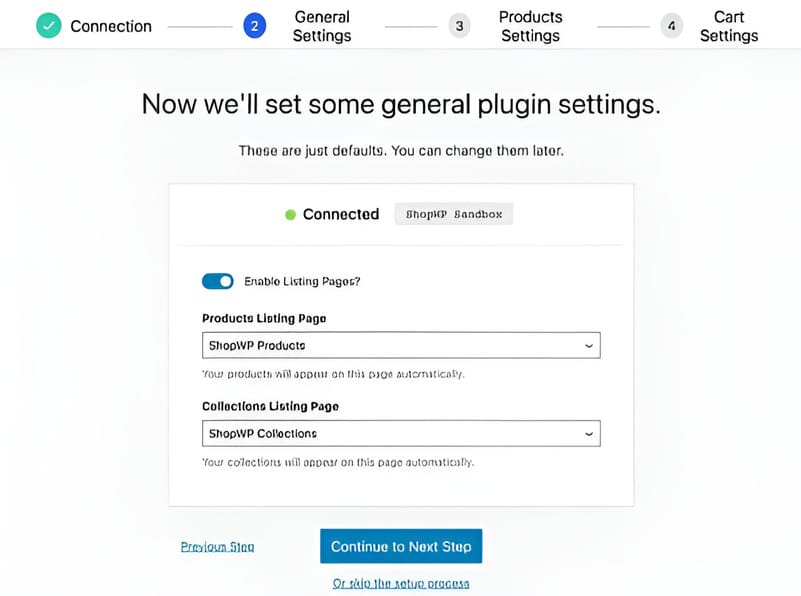
Choose if you need to link products or their pages to the Shopify store on your WordPress site.

Finally, choose whether to show a fixed cart tab and how users can open the checkout page. Once done, you will successfully integrate shopify with WordPress.
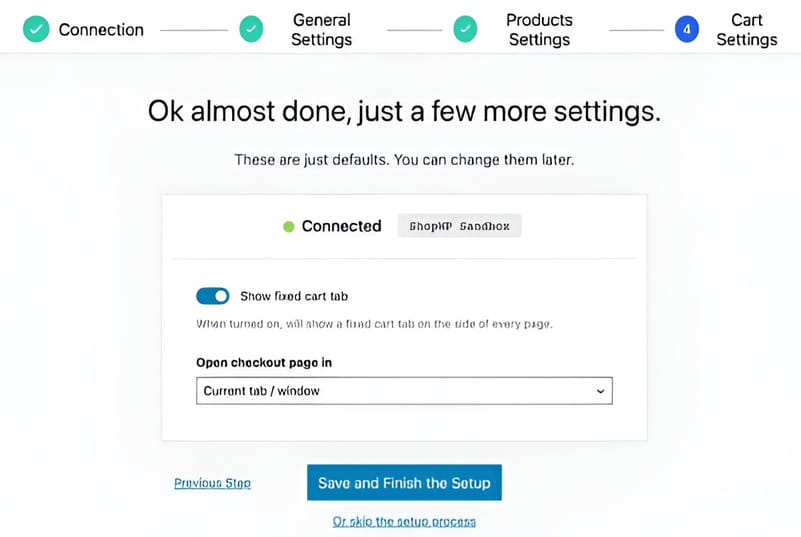
Should you buy?
You should opt for ShopWP to integrate Shopify with WordPress. It ensures solid security during the checkout process and flexibility to customize the frontend store through an extensive design library. Also, users do not need to manually update their WordPress and Shopify stores; as it automatically syncs all changes made.
So with ShopWP, businesses can create a cohesive online shopping experience and focus on growth and customer satisfaction without complex integrations.
